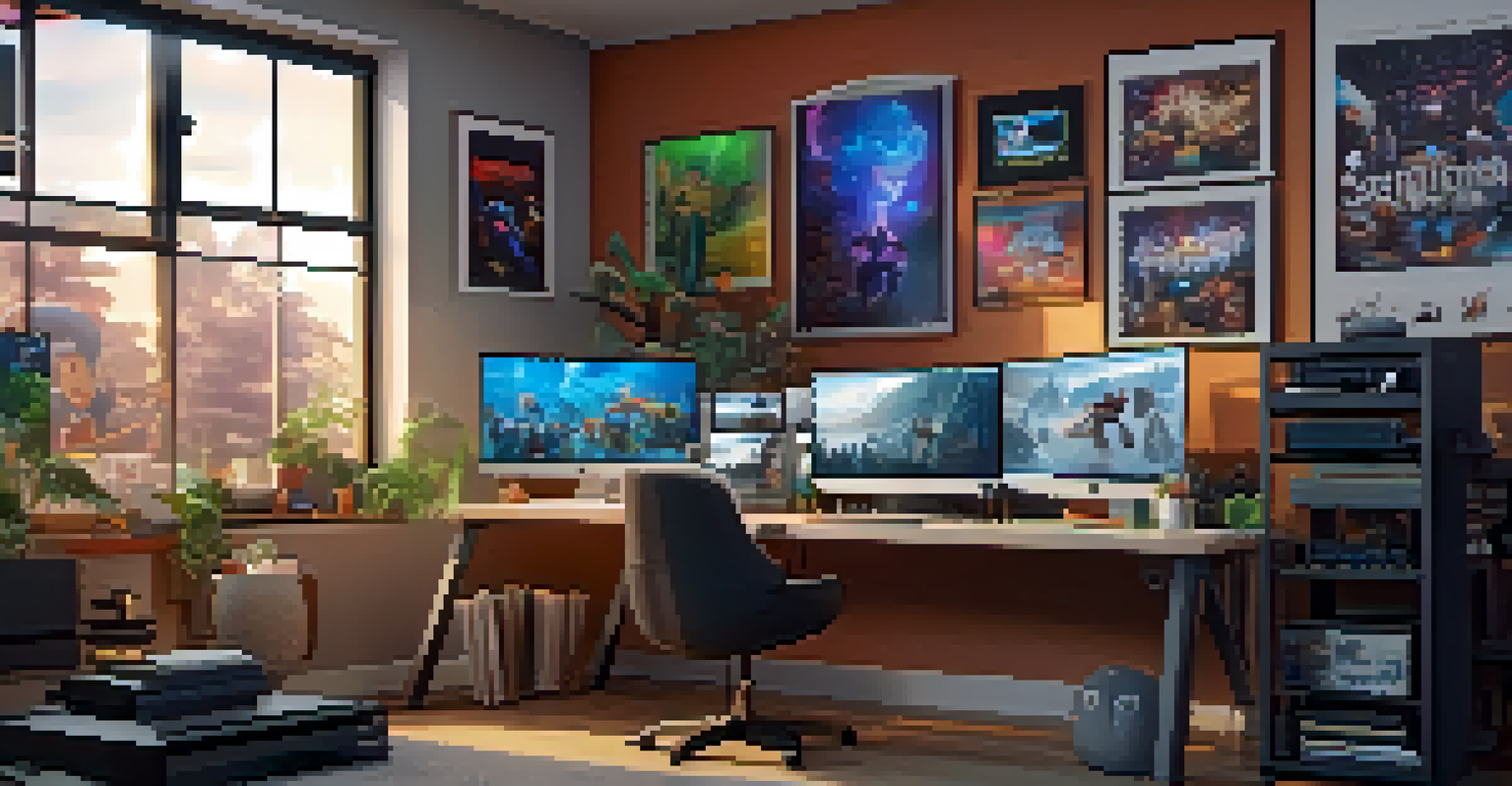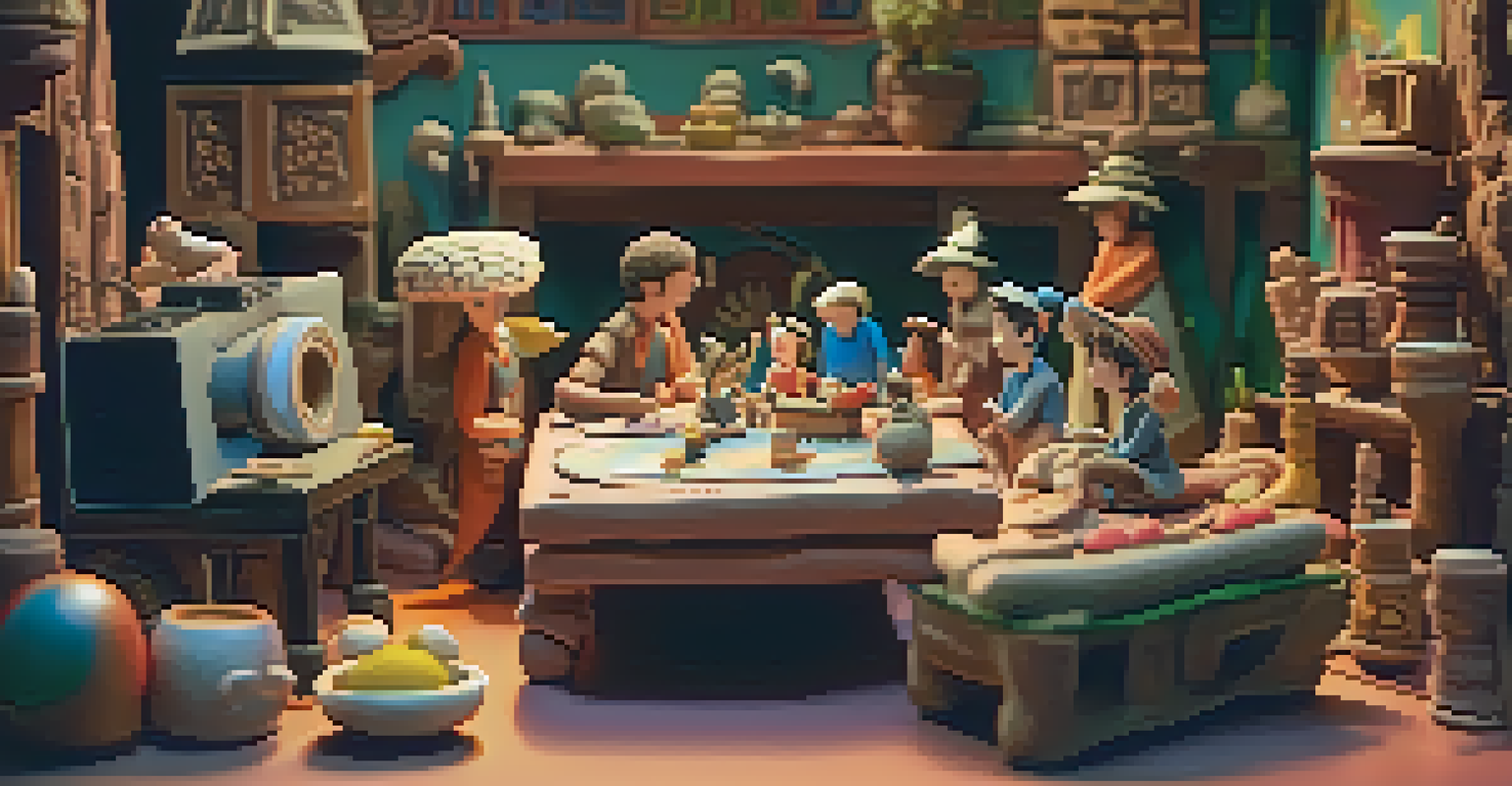Animation Techniques: From Traditional to Modern Approaches

The Roots of Animation: Traditional Techniques Explained
Animation has its roots deeply embedded in traditional techniques that date back to the early 20th century. From hand-drawn frames to stop-motion photography, these methods laid the groundwork for the art of animation as we know it today. Artists would painstakingly create thousands of drawings, each slightly different, to bring characters to life.
Animation is not the art of drawings that move but the art of movements that are drawn.
One popular traditional technique is cel animation, where characters are painted on transparent sheets called cels. This method allowed for more dynamic backgrounds while keeping the character movements fluid. Think of it like layering a cake—each layer adds depth and richness to the final product.
While traditional animation requires immense patience and skill, it also fosters a unique charm that many audiences still cherish. Films like Disney's 'Snow White' and 'Bambi' showcase the beauty and artistry of these techniques, making them timeless classics that resonate with viewers of all ages.
Transitioning to Digital: The Rise of Computer Animation
As technology advanced, so did animation techniques. The introduction of computer-generated imagery (CGI) revolutionized the animation industry, allowing for more complex and visually stunning creations. Think of it as upgrading from a typewriter to a powerful computer—suddenly, the possibilities are endless.

With CGI, animators can create three-dimensional characters and environments that were once unimaginable. Movies like 'Toy Story' and 'Shrek' brought these capabilities to the forefront, captivating audiences with lifelike visuals and intricate details. This shift not only enhanced storytelling but also opened doors to new genres and styles.
Digital Revolution in Animation
The rise of computer-generated imagery (CGI) transformed animation, allowing for complex storytelling and lifelike visuals that captivate audiences.
However, the transition wasn't without its challenges. Traditional animators had to adapt to new software and techniques, blending their artistry with digital tools. The result? A beautiful fusion of old and new that continues to evolve the art of animation, captivating viewers worldwide.
Stop Motion: A Timeless Technique in Modern Animation
Stop motion is a fascinating animation technique that combines traditional artistry with modern technology. By photographing physical objects—like clay figures or puppets—frame by frame, animators create the illusion of movement. It's akin to playing with dolls and capturing their adventures, but with a professional twist.
The greatest thing about animation is that it can be whatever you want it to be.
This method has seen a resurgence in recent years, thanks to its unique aesthetic and tangible quality. Films like 'Coraline' and 'The Nightmare Before Christmas' showcase the charm and creativity that stop motion can bring to storytelling. Each frame tells a story, often infused with a sense of whimsy and character.
Modern advancements in technology have also enhanced stop motion, allowing for more intricate designs and smoother animations. While rooted in tradition, this technique proves that innovation and creativity can go hand in hand, breathing new life into a beloved art form.
2D Animation: The Blend of Art and Technology Today
2D animation remains a beloved style, combining traditional hand-drawn techniques with modern digital tools. Software like Adobe Animate allows artists to create stunning animations while retaining the charm of classic styles. Imagine painting a beautiful mural, but having the ability to bring it to life with just a few clicks.
This blend of art and technology has led to a resurgence in 2D animation, especially in web series and short films. Shows like 'Adventure Time' and 'Rick and Morty' highlight the versatility and creativity that this style offers. These animations resonate with audiences, showcasing that sometimes simplicity can be the most effective approach.
Future Trends: VR and AI Innovations
Emerging technologies like virtual reality and artificial intelligence promise to enhance animation, creating more immersive experiences and diverse storytelling.
Moreover, 2D animation provides a platform for diverse storytelling and artistic expression. With minimal resources, creators can craft engaging narratives that speak to a wide range of audiences, proving that the essence of animation lies not just in visuals, but in the stories we tell.
3D Animation: Pushing Boundaries of Creativity
3D animation is at the forefront of modern storytelling, allowing for immersive experiences that captivate audiences. By creating three-dimensional models, animators can manipulate characters and environments in ways that traditional methods could only dream of. It's like stepping into a video game world, where you can explore every nook and cranny.
With advancements in technology, 3D animation has become more accessible, enabling creators to experiment with intricate designs and realistic movements. Films like 'Frozen' and 'Avatar' showcase the breathtaking possibilities of 3D animation, where every detail—from facial expressions to background scenery—is meticulously crafted.
However, with great power comes great responsibility. As animators continue to push the boundaries of creativity, they must also consider the impact of visual storytelling. Striking a balance between innovation and authenticity is crucial to maintaining the emotional connection that animation can evoke in viewers.
The Impact of Animation on Storytelling and Culture
Animation is more than just a visual spectacle; it's a powerful storytelling medium that shapes culture and influences perceptions. Through animated films and series, complex themes and emotions can be conveyed in a way that resonates with audiences of all ages. Think of animation as a universal language that transcends barriers and connects people.
From addressing social issues to exploring fantastical worlds, animation has the unique ability to tackle important subjects while entertaining. Films like 'Inside Out' delve into emotional intelligence, teaching viewers valuable lessons about feelings and relationships. This blend of education and entertainment is what makes animation so impactful.
Animation's Rich Traditional Roots
Traditional techniques like cel animation and stop motion laid the foundation for the captivating art of animation we enjoy today.
Moreover, animation reflects cultural values and societal changes, often mirroring the times we live in. As creators draw inspiration from their experiences, animated stories can foster empathy and understanding, making the world a little smaller and more connected.
Future Trends in Animation: What Lies Ahead
As we look to the future, the world of animation is poised for exciting new developments. With the rise of virtual reality (VR) and augmented reality (AR), animators are exploring ways to create immersive experiences that engage viewers on a whole new level. Picture stepping into your favorite animated film and becoming part of the adventure—this is no longer just a dream.
Additionally, advancements in artificial intelligence (AI) are changing the landscape of animation production. AI can assist in tasks like character design and scene generation, allowing animators to focus on storytelling and creativity. It’s like having a helpful assistant who takes care of the nitty-gritty details, freeing up time for the fun stuff.

These innovations promise to revolutionize the animation industry, making it more inclusive and diverse. As new voices enter the field, we can expect a richer tapestry of stories, each with its own unique flair. The future of animation is bright, and we can't wait to see where it takes us next.